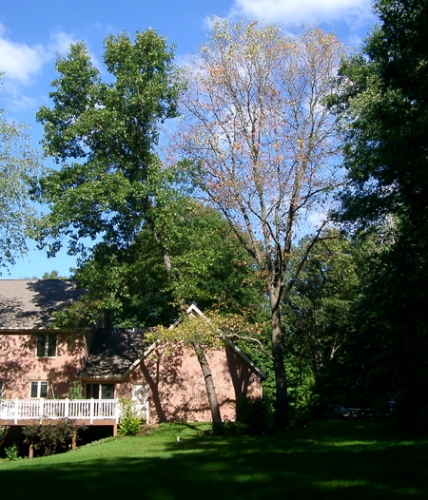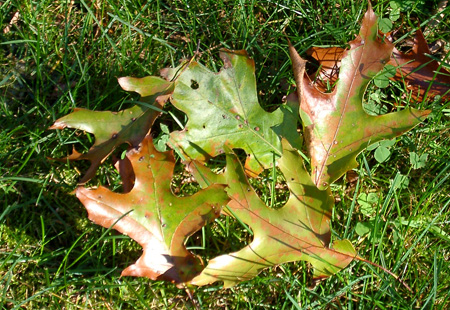Pruning oaks and the oak wilt infection risk
To avoid above ground oak wilt infection, don’t do any more oak pruning until fall.
I have received several calls from arborists asking if our cooler temperatures have prolonged the oak pruning season. The short answer is no, do not do any more pruning of oaks.
Here is a short explanation of the biology behind this. When oak trees are pruned, volatiles are released that are attractive to certain insects. Some of these beetles are vectors of the oak wilt pathogen (Ceratocystis fagacearum) and can carry spores to the pruning wounds. The pruning cuts can be entry points for the oak wilt fungus. Of course, pruning cuts do not heal instantaneously; research has shown that wounds can be infected for up to eight days after the pruning is done. Sapwood produced in the spring is also more susceptible to infection than that produced later in the season.

This tree was confirmed oak wilt case after being infected by an un-informed arborist who made cuts on the tree.

Fallen leaves of the oak wilt infected tree.
The months of April, May and June are considered the months with the highest risk for above ground oak wilt infection. The months of November to March are the safest time to prune oaks, when there is no to extremely little risk of oak wilt infection.
For more information on pruning and associated oak wilt risks, visit the following University of Minnesota web sites: Oak wilt risk status in Minnesota and Oak wilt in Minnesota.



 Print
Print Email
Email


